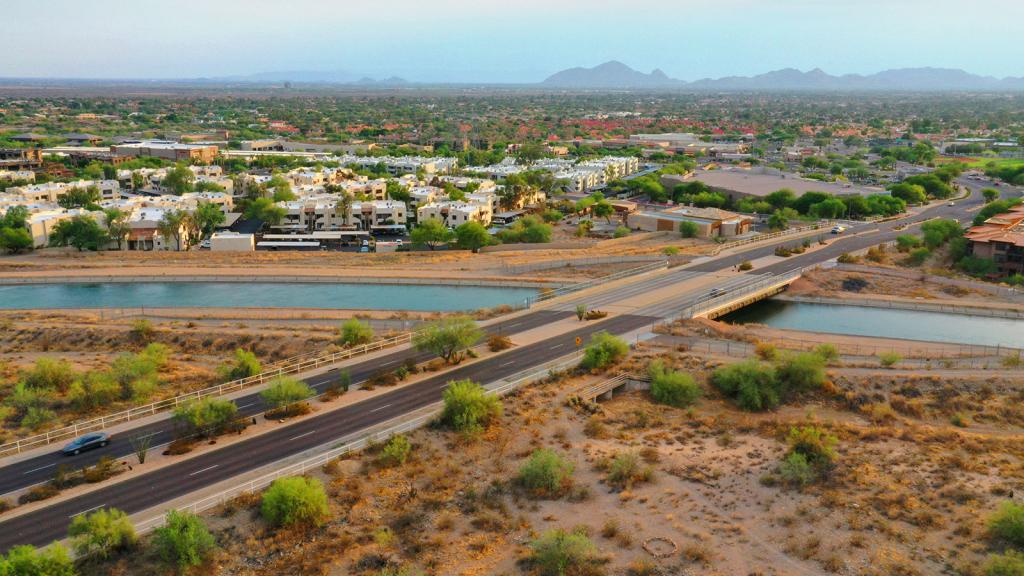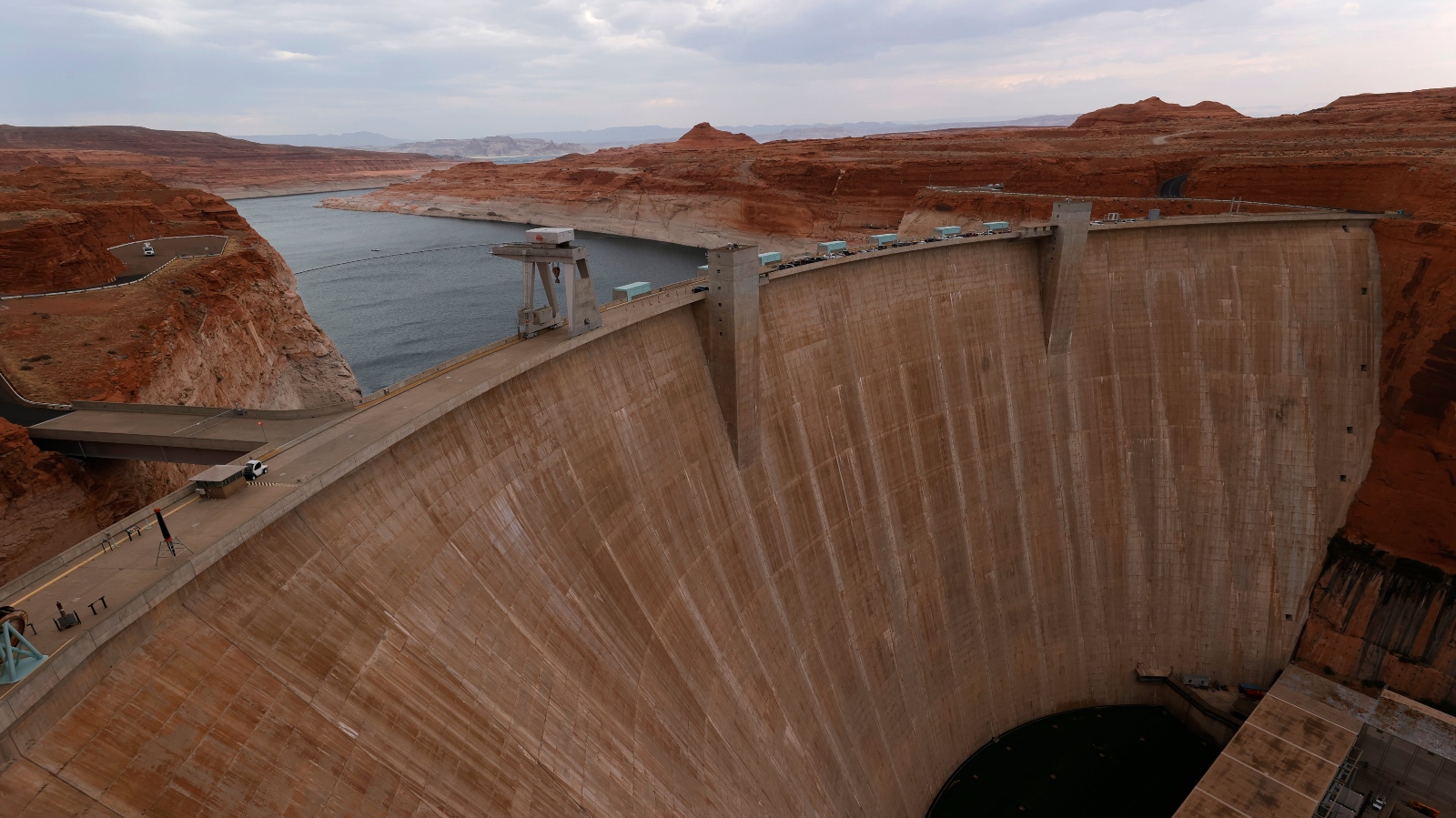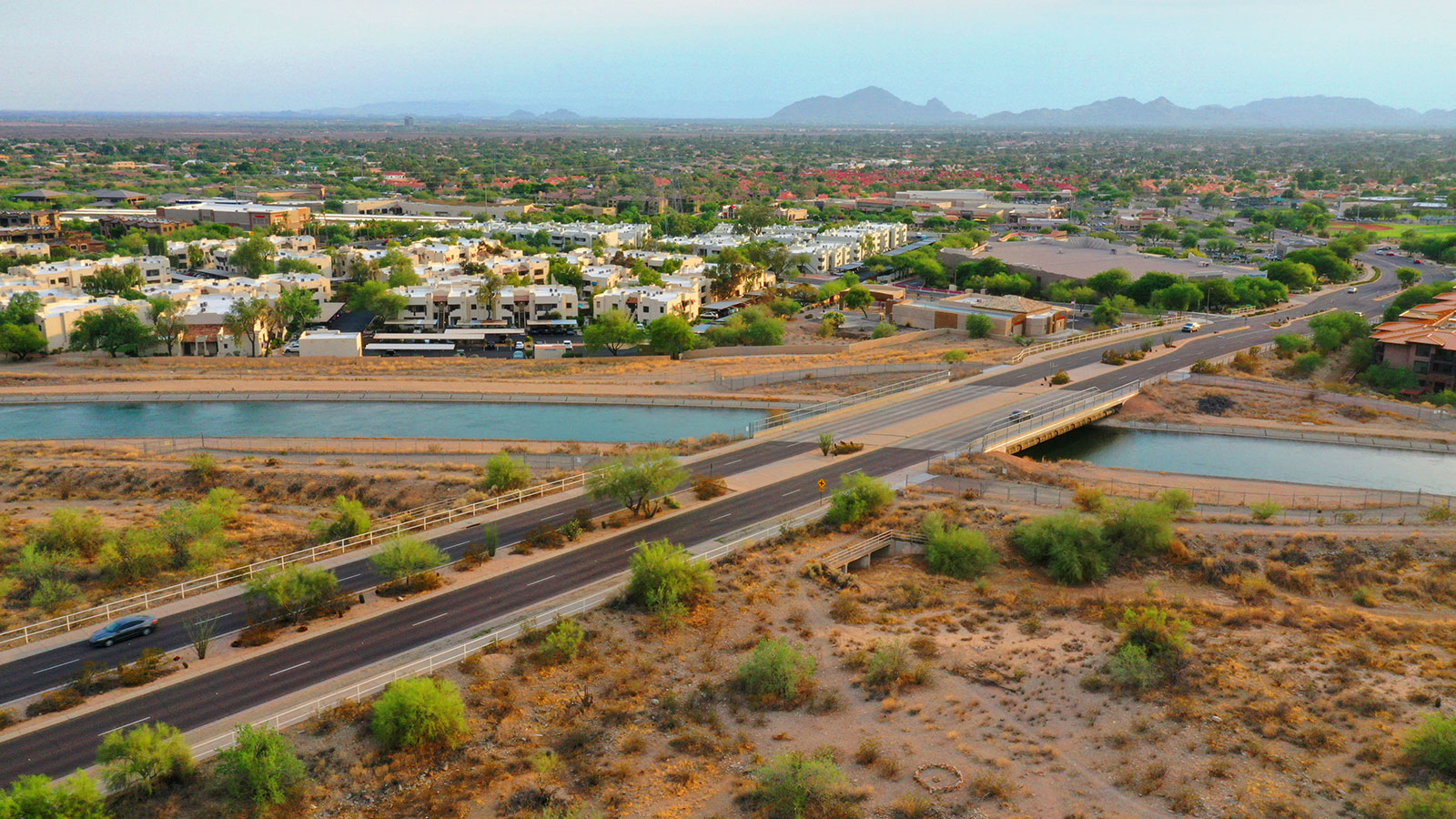This story is part of the Grist series Parched, an in-depth look at how climate change-fueled drought is reshaping communities, economies, and ecosystems.
Stretching for 186 miles along the border of Utah and Arizona, Lake Powell serves as one of two major reservoirs that anchor the Colorado River. Last week, the lake reached a disturbing new milestone: water levels fell to their lowest threshold ever, since the lake was created by the damming of the Colorado in 1963.
The precipitous drop is the result of the decades-long drought in the American West that has ravaged the Colorado River for years, forcing unprecedented water cuts in states like Arizona. This newest milestone on Lake Powell, though, is significant for another reason. The reservoir also sustains a hydroelectric power plant, Glen Canyon Dam, that provides energy to millions of people. That power source, critical for rural and tribal communities across the region, is now in jeopardy.
The federal government expects Lake Powell’s levels to rise again this spring as mountain snow melts across the West, but there’s still a significant chance that the reservoir will reach the so-called “minimum power pool” stage some time in the next few years, at which point it will stop producing hydroelectric power altogether. The dry spell has been causing slowdowns or shutdowns at power plants in California and Nevada, creating yet another challenge for officials trying to adapt to a seemingly endless water shortage.
If reservoirs like Lake Powell keep falling, millions of people across the West will have to turn to dirtier and more expensive energy at a time when transitioning to renewable power is of paramount importance for reducing carbon emissions.
The Colorado provides water for more than 40 million people. While the river has gone through several wet and dry spells over the past century, it’s never faced a challenge like the present “megadrought,” which scientists say has no precedent in the last millennium. As precipitation levels have remained low year after year, inflow from the river’s tributaries has slowed to a trickle, and its reservoirs have started to run dry.
When Lake Powell is full, its surface sits some 3,700 feet above sea level, but the reservoir hasn’t reached that threshold in some time. Water levels have fallen over the past several years of rainless winters, reaching a new low of 3,525 feet last week. The lake is now only a quarter full, and water levels are just 35 feet above the threshold for power generation. Officials say there is a significant risk the lake will fall below that threshold in the next few winters.

When federal officials built a dam at the southern end of Glen Canyon, forming Lake Powell, they assumed there would always be enough water moving through the Colorado River system to turn the turbines, and thereby generate a supposedly endless supply of cheap renewable energy. The customers who bought this clean power were rural towns, electrical cooperatives, and tribes, many of whom didn’t have many alternate power sources.
In recent years, as Lake Powell has begun to dry up, the turbines have become less efficient. The federal Bureau of Reclamation has already shaved down power deliveries from the dam.
“We are already seeing reduced generation from Glen Canyon Dam,” said Lisa Meiman, a spokesperson for the Western Area Power Administration, a government authority that markets hydroelectric power from around the region. “[Generation] has been dropping pretty consistently as the lake elevations have declined, so we’re about a third less efficient in terms of power production now than we are at an average elevation.”
When that happens, Meiman said, “we have to go out and purchase replacement power in the spot market, which is typically more expensive.” It also comes from dirtier sources like coal and gas, she said. For most customers who buy power from the dam, losing it won’t be all that big of a deal. For them, hydroelectric power accounts for only a fraction of their overall power needs, and any price increases get spread out over thousands of users, keeping costs down.
For some customers, though, the shutdown of the dam will be far more painful. Utility bills have already started to rise as the dam becomes less efficient, and a total shutdown would lead to significant cost increases for the small and remote entities that rely on it.
Hardest hit will be the 50-odd tribal nations dependent on hydroelectric power not only for residential energy needs but also to power revenue-generating commercial ventures like casinos. Thanks to generations of underinvestment by the federal government, many tribes that buy electricity from Lake Powell don’t have their own power generation capacity to replace it, and building new power sources isn’t cheap. According to a report produced by a consulting firm looking at the impact of a Glen Canyon Dam shutdown, tribal nations would experience the “the most troubling” consequences of the power loss.
The dam’s largest tribal customer is the Navajo Tribal Utility Authority, or NTUA, which provides electricity to some 30,000 residential customers on the Navajo reservation.
“It’s a very sensitive issue for all of us right now,” Walter Haase, the tribal utility’s general manager, told the Associated Press last week on the heels of the water level announcement from the Bureau of Reclamation.
The NTUA is spending millions of dollars to build out renewable energy capacity that could help soften the blow of a dam shutdown. Other tribes that can’t afford to build such new power sources, though, will have to pay higher rates for replacement electricity out of pocket, which could strain revenues. The consultants’ report pointed to the Hopi Tribe, which does not have a casino to bolster its finances, as being especially vulnerable to these cost hikes.
Small municipalities that depend on the dam are also feeling the pain.
“Hydro is very low-cost, renewable energy, [so] our energy costs will go way up,” said Bryan Hill, the general manager of Page Utility Enterprises. The company services the town of Page, Arizona, which sits on the edge of Lake Powell. Hill said he’s already been feeling the pain as deliveries have slowed down.
“They’ve got a tourniquet on in the form of slowing down the generation and trying to reduce the bleeding,” he said, “but we’re already losing money. Unless things change, there will be a significant rate adjustment.” The exact scale of that adjustment isn’t clear, but residents of Page who have come to rely on cheap power will see a noticeable rise in their annual bills. Because spot-market energy is also getting more expensive as the nation’s power system transitions from coal and gas toward renewables, the rate increase will be compounded.
Glen Canyon Dam isn’t the only hydroelectric source that’s struggled amid the drought: Power generation at the larger Hoover Dam in nearby Lake Mead has fallen by around a quarter, and officials in California shut down a hydroelectric plant at Lake Oroville last year as water levels in the lake fell below the generation threshold. The two dams together serve about 2 million customers. These power losses further drive up prices and strain the grid at a time when energy is already getting more expensive as older coal plants come offline.
To make matters worse, though, the power shortage in Lake Powell is intertwined with the larger water shortage on the Colorado. If the water level in Lake Powell continues to fall, federal officials will have to balance between the needs of water users and the needs of power users. If they hold enough water back in Lake Powell to keep the turbines running, they’ll be withholding water from farmers and homeowners who rely on it farther downstream. If they push as much water as they can toward the end users, they’ll spike the power bills of the small entities who rely on the dam.
The agency has yet to decide on its priorities should the historic lows continue, but time is running out. The latest models suggest there’s a 1 in 4 chance the dam won’t produce power by 2024.
“Glen Canyon Dam and Lake Powell serve many purposes, many divergent purposes,” said Meiman. “For a ton of stakeholders who are all going to be affected by declining lake elevations, there is not going to be a simple solution or an easy solution.”
*Correction: An earlier version of this article misstated the term for the threshold at which a dam cannot generate power. The correct term for this threshold is “minimum power pool.”




